References and Resources
References
Berliner, D. C. (1986). In pursuit of the expert pedagogue. Educational Researcher, 15(7), 5–13.
Brophy, J., & Good, T. L.(1986). Teacher behavior and student achievement. In V. Richardson (Ed.), Handbook of research on teaching (pp. 328–375). Washington, DC: American Educational Research Association.
Caldarella, P., & Merrell, K.W. (1997). Common dimensions of social skills of children and adolescents: A taxonomy of positive behaviors. The School Psychology Review, 26(2), 264-278.
Chafouleas, S. M. (2011). V2.1 DBR: Use in assessment of student behavior [Slides]. Storrs, CT: University of Connecticut. Retrieved from http://www/directbehaviorratings.com/cms/files/pdf/dbr_for_assessment.pdf
Chafouleas, S. M., Riley-Tillman, C., & Christ, T. J. (2010). V1.3 DBR standard form – fill-in behaviors. Storrs, CT: University of Connecticut. Retrieved from http://www.directbehaviorratings.org/cms/files/pdf/V%201.3%20DBR%20Standard%20Form%20-%20Fill-in%20Behaviors.pdf
Chafouleas, S. M., Riley-Tillman, C., Christ, T. J., & Sugai, G. (2009). V1.4 DBR standard form. Storrs, CT: University of Connecticut. Retrieved from http://www.directbehaviorratings.com/cms/files/pdf/V%201.4%20DBR%20Standard%20Form%20with%203%20Standard%20Behaviors.pdf
Chapman, C., Laird, J., Ifill, N., and KewalRamani, A. (2011). Trends in High School Dropout and Completion Rates in the United States: 1972–2009 (NCES 2012-006). U.S. Department of Education. Washington, DC: National Center for Education Statistics. Retrieved from https://nces.ed.gov/pubs2012/2012006.pdf
Council for Exceptional Children (2014). Council for Exceptional Children Standards for Evidence-Based Practices in Special Education. Arlington, VA: Council for Exceptional Children.
Crone, Horner, & Hawken (2004). Responding to Problem Behavior in Schools: The Behavior Education Program. New York, NY: Guilford Press
Dane, A. V., & Schneider, B.H. (1998). Program integrity in primary and early secondary prevention: Are implementation effects out of control? Clinical Psychology Review, 18, 23-45.
DiPerna, J. C., & Elliott, S.N. (1999), Development and validation of the Academic Competence Evaluation Scales, Journal of Psychoeducational Assessment 17, 207-225
Direct behavior ratings. (2010). Storrs, CT: University of Connecticut. Retrieved from http://www.directbehaviorratings.com/cms/
Eber, L., Hyde, K., Rose, J., Breen, K., McDonald, D., & Lewandowski, H. (2009). Completing the continuum of schoolwide positive behavior support: Wraparound as a tertiary-level intervention. In W. Sailor, G. Dunlop, & G. Sugai (Eds.). The resource guide to wraparound. Portland, OR: National Wraparound Initiative, Research and Training Center for Family Support and Children’s Mental Health.
Elliott, S. N, & Gresham, F. M. (1991). Social skills intervention guide: Practical strategies for social skills training. Circle Pines, MN: American Guidance
Filter et al. (2007). Check-in/Check-out: A post hoc evaluation of an efficient secondary level intervention for reducing problem behaviors in schools. Education and Treatment of Children, 30, 69-84.
Flay, B. R., Biglan, A., Boruch, R. F., González Castro, F., Gottfredson, D., Kellam, S., Mościcki, E. K., Schinke, S., Valentine, J. C., and Ji, P (2005). Standards of Evidence: Criteria for Efficacy, Effectiveness and Dissemination. Prevention Science, 6 (3), 151 – 175.
Gresham, F. M. (1989). Assessment of treatment integrity in school consultation and prereferral intervention. School Psychology Review, 18, 37–50.
Gresham et al., (1993). Treatment integrity in applied behavior analysis with children. Journal of Applied Behavior Analysis, 26, 257-263.
Hanley, G. P. (2012). Functional assessment of problem behavior: Dispelling myths, overcoming implementation obstacles, and developing new lore. Behavior analysis in practice, 5(1), 54-72.
Horner, R. (2004). Behavior Support Plan Template. Retrieved from www.pbis.org/common/pbisresources/tools/BSP_Template.doc
Kerr, M.M., & Nelson, C. M. (2010). Strategies for addressing behavior problems in the classroom (6th ed.). Boston, MA: Pearson.
Kounin, J. S. (1970). Discipline and group management in classrooms. New York: Holt, Rinehart and Winston.
Lee, Y. Y., Sugai, G., & Horner, R. H. (1999). Using an instructional intervention to reduce problem and off-task behaviors. Journal of Positive Behavior Interventions, 1(4), 195–204.
Marzano, R. J., Marzano, J. S., & Pickering, D. (2003). Classroom management that works: Research-based strategies for every teacher. Alexandria, VA: ASCD.
Marzano, R. J., Pickering, D. J., & Pollock, J. E. (2001). Classroom instruction that works: Research-based strategies for increasing student achievement. Alexandria, VA: ASCD.
Michigan Department of Education. (n.d.). Michigan’s integrated behavior and learning support initiative. Lansing, MI: Author. Retrieved from http://miblsi.cenmi.org/
National Center on Intensive Intervention. (2013). Data-based individualization: A framework for intensive intervention. Washington, DC: Author. Retrieved from http://www.intensiveintervention.org/sites/default/files/DBI%20a%20Framework%20for%20Intensive%20Intervention.pdf
National Center on Intensive Intervention (2013). Monitoring Student Progress for Behavioral Interventions. Washington, DC: U.S. Department of Education, Office of Special Education Programs, National Center on Intensive Intervention. Retrieved from http://www.intensiveintervention.org/resource/monitoring-student-progress-behavioral-interventions-dbi-training-series-module-3
National Center on Intensive Intervention (2013). Using FBA for Diagnostic Assessment in Behavior. Washington, DC: U.S. Department of Education, Office of Special Education Programs, National Center on Intensive Intervention. Retrieved from http://www.intensiveintervention.org/resource/using-fba-diagnostic-assessment-behavior-dbi-training-series-module-6
National Center on Intensive Intervention (2014). Designing and Delivering Intensive Intervention in Behavior. Washington, DC: U.S. Department of Education, Office of Special Education Programs, National Center on Intensive Intervention. Retrieved from http://www.intensiveintervention.org/resource/designing-and-delivering-intensive-intervention-behavior-dbi-training-series-module-8
O’Donnell, C. L. (2008). Defining, conceptualizing, and measuring fidelity of implementation and its relationship to outcomes in K-12 curriculum intervention research. Review of Educational Research, 78, 33-84
Pierangelo, R., & Giuliani, G. (2008) Frequently asked questions about response to intervention: A step-by-step guide for educators. Thousand Oaks, CA: Corwin Press.
Planty, M., Hussar, W., Snyder, T., Provasnik, S., Kena, G., Dinkes, R., et al. (2008). The condition of education 2008 (NCES 2008-031). Washington, DC: National Center for Education Statistics, Institute of Education Sciences, U.S. Department of Education. Retrieved from http://nces.ed.gov/pubs2008/2008031.pdf
Reid, R., Gonzalez, J. E., Nordness, P. D., Trout, A., & Epstein, M. H. (2004). A meta-analysis of the academic status of students with emotional/behavioral disturbance. The Journal of Special Education, 38, 130-143.
Sanford, C., Newman, L., Wagner, M., Cameto, R., Knokey, A.-M., and Shaver, D. (2011). The post-high school outcomes of young adults with disabilities up to 6 years after high school: Key findings from the National Longitudinal Transition Study-2 (NLTS2) (NCSER 2011-3004). Menlo Park, CA: SRI International. Retrieved from http://www.nlts2.org/nlts2/reports/2011_09/nlts2_report_2011_09_complete.pdf
School of Psychology at Mizzou. (2011). Evidence Based Intervention Network. Columbia, MO: University of Missouri. Retrieved from http://ebi.missouri.edu
Seligman, M. E. P., & Maier, S. F. (1967). Failure to escape traumatic shock. Journal of Experimental Psychology, 74(1). Retrieved from http://psych.hanover.edu/classes/learning/papers/seligman%20maier%201967.pdf
Sulzer-Azaroff, B., & Mayer, G. R. (1991). Behavior analysis for lasting change. Fort Worth, TX: Holt, Rinehart and Winston.
United States Government Accountability Office. (2009). Seclusions and restraints: Selected cases of death and abuse at public and private schools and treatment centers. (GAO Publication No. GAO-09-719T). Washington, D.C.: U.S. Government Printing Office. Retrieved from http://www.gao.gov/assets/130/122526.pdf
U.S. Department of Education. (2012). Restraint and Seclusion: Resource Document. Washington, D.C. Retrieved from http://www2.ed.gov/policy/seclusion/restraints-and-seclusion-resources.pdf
VanDenBerg, J., Bruns, E. J., & Burchard, J. (2008). History of the wraparound process. In E. J. Bruns & J. S. Walker (Eds.). The resource guide to wraparound. Portland, OR: National Wraparound Initiative, Research and Training Center for Family Support and Children’s Mental Health.
Wagner, M., & Cameto, R. (2004). The characteristics, experiences, and outcomes of youth with emotional disturbances. NLTS2 Data Brief: A Report From the National Longitudinal Transition Study-2,3(2). Retrieved from http://www.ncset.org/publications/nlts2/NCSETNLTS2Brief_3.2.pdf
Walker et al., (2004). Antisocial behavior in school: Evidenced-based practices (2nd ed.). Belmont. CA: Wadsworth/Thomson Learning.
Wehby, J. H., & Kern, L. (2014). Intensive behavior intervention: What is it, what is its evidence base, and why do we need to implement now? Teaching Exceptional Children, 46(4), 38-44.
Wehby, J. H., Symons, F. & Shores, R. E. (1995). A descriptive analysis of aggressive behavior in classrooms for students with emotional and behavioral disorders. Behavioral Disorders, 20(2), 87-105.
What Works Clearinghouse. (2014). Procedures and Standards Handbook Version 3.0. Washington, DC: National Center for Education Evaluation and Regional Assistance, Institute of Education Sciences, U.S. Department of Education. Retrieved from http://ies.ed.gov/ncee/wwc/pdf/reference_resources/wwc_procedures_v3_0_standards_handbook.pdf
Zins, Weissbert, Wang, & Walberg, (2004) Building academic success through social and emotional learning: What does the research say? New York: Teachers College Press.
Additional Reading
Alter, P. J., & Conroy, M. A. (n.d.). Preventing challenging behavior in young children: Effective practices. Center for Evidence-Based Practice: Young Children with Challenging Behavior. Retrieved from http://challengingbehavior.fmhi.usf.edu/do/resources/documents/rph_preventing_challenging_behavior.pdf
Colvin, G., & Sprick, R. (1999). Providing administrative leadership for effective behavior support: Ten strategies for principals. Effective School Practices, 17, 65-71.
Cooper, J. O., Heron, T. E., & Heward, W. L. (2007). Applied behavior analysis (2nd ed.). Upper Saddle River, NJ: Pearson.
Crone, D. A., & Horner, R. H. (2003). Building Positive Behavior Support Systems in Schools: Functional Behavioral Assessment. New York: The Guilford Press.
Dunlap, G., Ostryn, C., & Fox, L. (2011). Preventing the use of restraint and seclusion with young children: The role of effective, positive practices. Technical Assistance Center on Social Emotional Intervention. Retrieved from http://challengingbehavior.fmhi.usf.edu/do/resources/documents/brief_preventing.pdf
Dynarski, M., Clarke, L., Cobb, B., Finn, J., Rumberger, R., and Smink, J. (2008). Dropout Prevention: A Practice Guide (NCEE 2008–4025). Washington, DC: National Center for Education Evaluation and Regional Assistance, Institute of Education Sciences, U.S. Department of Education. Retrieved from http://ies.ed.gov/ncee/wwc/pdf/practice_guides/dp_pg_090308.pdf
Epstein, M., Atkins, M., Cullinan, D., Kutash, K., and Weaver, R. (2008). Reducing Behavior Problems in the Elementary School Classroom: A Practice Guide (NCEE #2008-012). Washington, DC: National Center for Education Evaluation and Regional Assistance, Institute of Education Sciences, U.S. Department of Education. Retrieved from http://ies.ed.gov/ncee/wwc/pdf/practice_guides/behavior_pg_092308.pdf
Flannery, K. B., & Sugai, G. (Eds.). (2009). School-wide PBIS implementation in high schools: Current practice and future directions. University of Oregon. Retrieved from http://www.pbis.org/common/pbisresources/publications/HighSchoolMonograph.pdf
Florida’s Positive Behavior Support Project. (2011). Implementing a multi-tiered system of support for behavior: A practical guide. University of South Florida. Retrieved from http://flpbs.fmhi.usf.edu/pdfs/RTIB%20Guide%20101811_final.pdf
Gottfredson, G. D, Gottfredson, D. C., & Czeh, E. R. (2000). National study of delinquency prevention in schools. Marriottsville, MD: Gottfredson Associates, Inc. Retrieved from https://www.ncjrs.gov/pdffiles1/nij/grants/194116.pdf
Kyle, P., & Rogien, L. (2004). Classroom management: Corrective strategies. Bethesda, MD: National Association of School Psychologists. Retrieved from http://www.nasponline.org/educators/HCHSII_CorrectiveStrategies.pdf
Kyle, P., & Rogien, L. (2004). Classroom management: Preventive strategies. Bethesda, MD: National Association of School Psychologists. Retrieved from http://www.nasponline.org/educators/HCHSII_PreventiveStrategies.pdf
Nashatker, J. (2010). Caught in the middle: Disciplining students with disabilities. Principal Leadership, 11(2), 46-50. Retrieved from http://www.nassp.org/Content/158/pl_oct10_nashatker.pdf
Sugai, G., Horner, R. H., Algozzine, R., Barrett, S., Lewis, T., Anderson, C., Bradley, R., Choi, J. H., Dunlap, G., Eber, L., George, H., Kincaid, D., McCart, A., Nelson, M., Newcomer, L., Putnam, R., Riffel, L., Rovins, M., Sailor, W., Simonsen, B. (2010). School-wide positive behavior support: Implementers’ blueprint and self-assessment. Eugene, OR: University of Oregon. Retrieved from http://www.pbis.org/pbis_resource_detail_page.aspx?Type=4&PBIS_ResourceID=713
Technical Assistance Center on Social Emotional Intervention. (2004). Facts about young children with challenging behaviors. University of South Florida. Retrieved from http://challengingbehavior.fmhi.usf.edu/do/resources/documents/facts_about_sheet.pdf
Web Resources
PBIS
The OSEP Technical Assistance Center on Positive Behavioral Interventions and Supports (PBIS)
This website offers resources, examples, presentations, and research on PBIS. Resources are organized by topic and audience.
NCII
The National Center on Intensive Interventions (NCII)
Key resources:
o Monitoring Student Progress for Behavioral Interventions (DBI Training Series Module 3)
o Using FBA for Diagnostic Assessment in Behavior (DBI Training Series Module 6)
o Designing and Delivering Intensive Intervention in Behavior (DBI Training Series Module 8)
- Webinars https://intensiveintervention.org/type/webinars?page=1
- Tools Charts. Ratings of the scientific rigor of commercially available tools and interventions that can be used as part of a data-based individualization program. https://intensiveintervention.org/about-charts-resources
IRIS
Key resources
- Behavior and classroom management resources http://iris.peabody.vanderbilt.edu/iris-resource-locator/?term=behavior-classroom-management
- Evidence-Based Practice Summaries http://iris.peabody.vanderbilt.edu/ebp/
EBI Network
Evidence Based Intervention Network
- Acquisition Interventions: The student needs help learning the appropriate behavior
- Proficiency (Gets Something) Interventions: The child gains something (e.g. attention) when they engage in the problem behavior.
- Proficiency (Escape Something) Interventions: The Child is able to avoid something (e.g. academic or social task) when they engage in the problem behavior.
- Generalization Interventions: The student needs help doing the behavior in a new setting, time or manner
- Classwide Interventions
DBR
Method for progress monitoring standard and individualized behaviors.
Response to Intervention Action Network
http://www.rtinetwork.org/learn/what
Many students with behavioral concerns also struggle academically, which may influence behavior. This website has many resources related to data-based decision making, academic assessment, and multi-level prevention systems.
Other Internet Resources Organized by Level of Support
Universal Supports
- Florida’s Positive Behavior Support Project: Tier 1 Modules. These modules provide information on elements of Tier 1 implementation, including office discipline referral forms, developing effective consequences, teaching appropriate behavior, and developing a schoolwide reward system. (http://flpbis.cbcs.usf.edu/tiers/tier1.html)
Supplemental Interventions
- Tier 2 Overview This is a comprehensive guide to all the steps for implementation of targeted supports in PBIS.
- Check In Check Out, Michigan’s Integrated Behavior and Learning Support Initiative (MiBLSi). This website provides a collection of information and resources on implementing check in/check out as a Tier 2 intervention. (http://miblsi.cenmi.org/MiBLSiModel/Implementation/ElementarySchools/TierIISupports/Behavior/TargetBehaviorInterventions/CheckInCheckOut.aspx)
Intensive Interventions
- Functional Behavioral Assessment [FBA], Behavioral Intervention Plans [BIPs], and Positive Interventions and Supports from the Virginia Department of Education. This 24-page document offers a comprehensive description of FBA and BIPs and their relationhip to special education law and practice.
- Parents’ Guide to Functional Assessment and Support from the University of Oregon.
- What Is a Behavior Intervention Plan? from Understood. This resource provides an overview of BIPs, what should be included in a plan, and what to remember when writing a plan.
Contributing Developers
Berry Kuchle, L., Littman J., Elledge, A., & McInerney, M. (2014). Course Enhancement Module: Evidence-Based Behavioral Interventions. Gainesville, FL: The CEEDAR Center. Retrieved on (month day, year,) from http://www.ceedar.org
You have reached the last page of this Course Enhancement Module.



